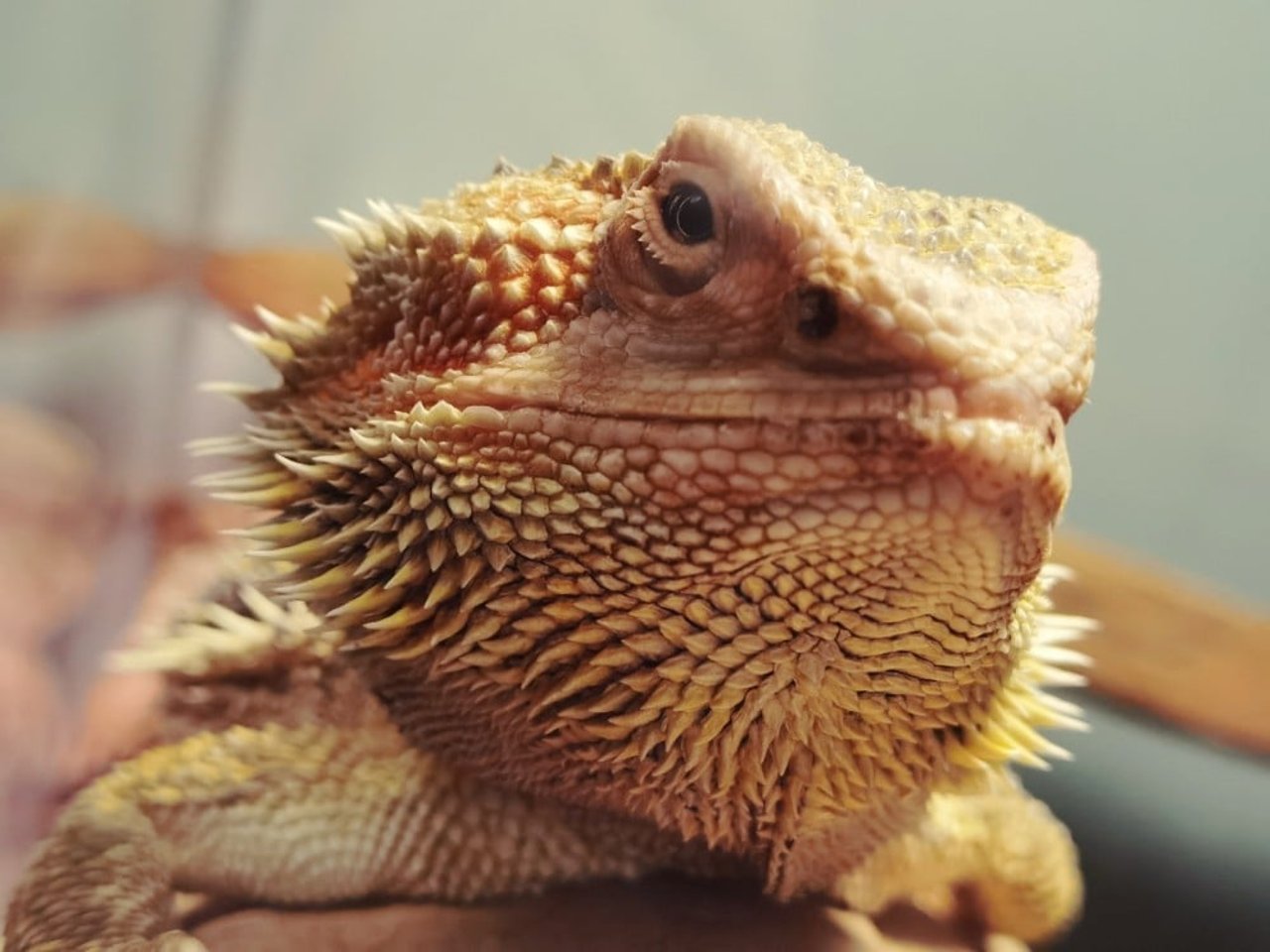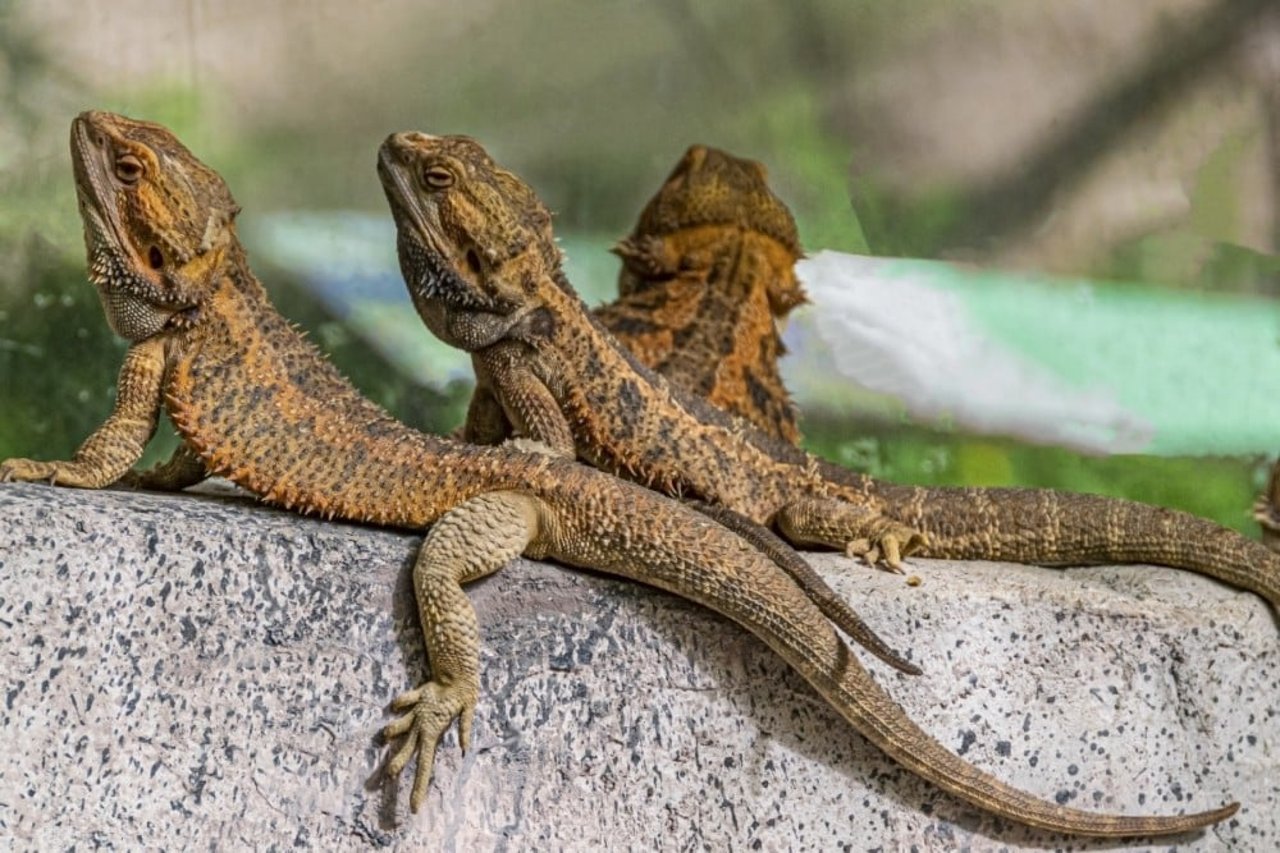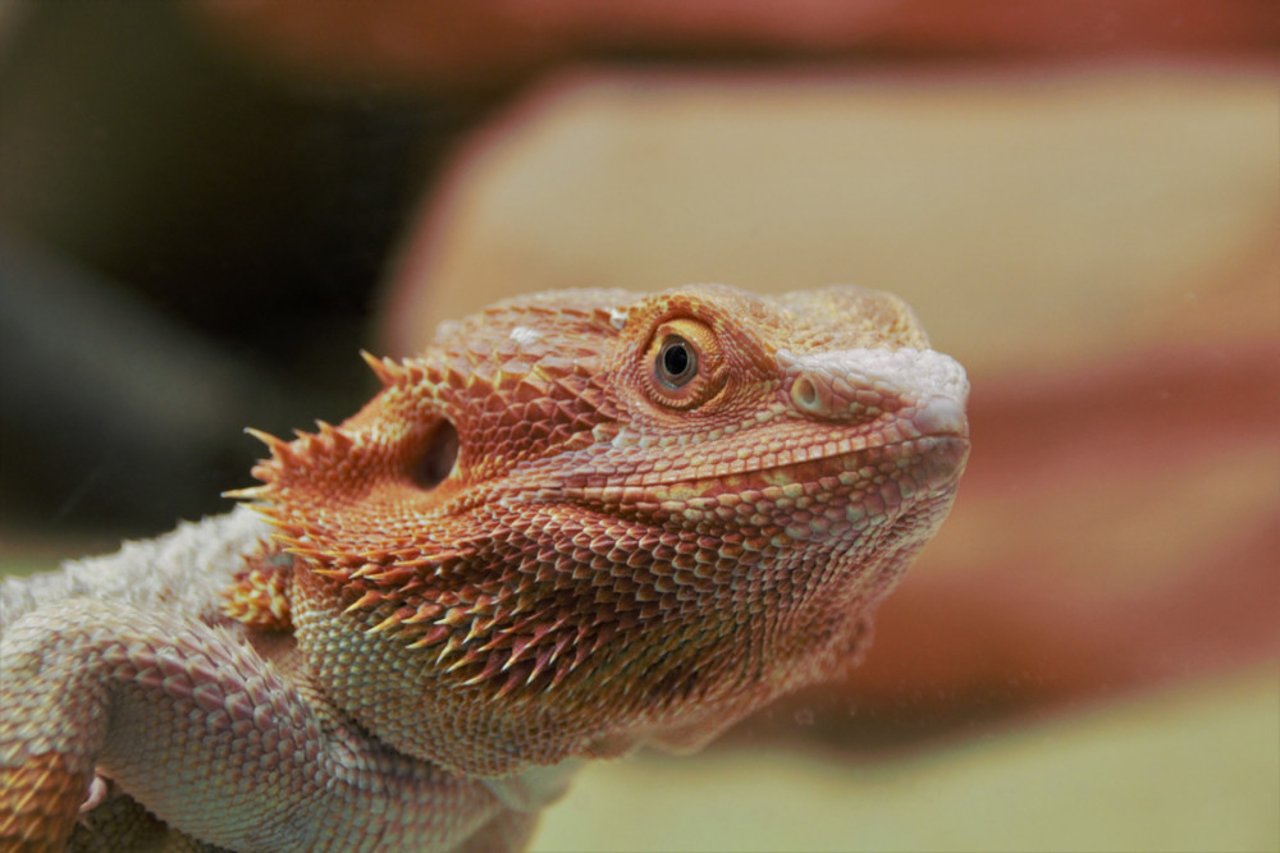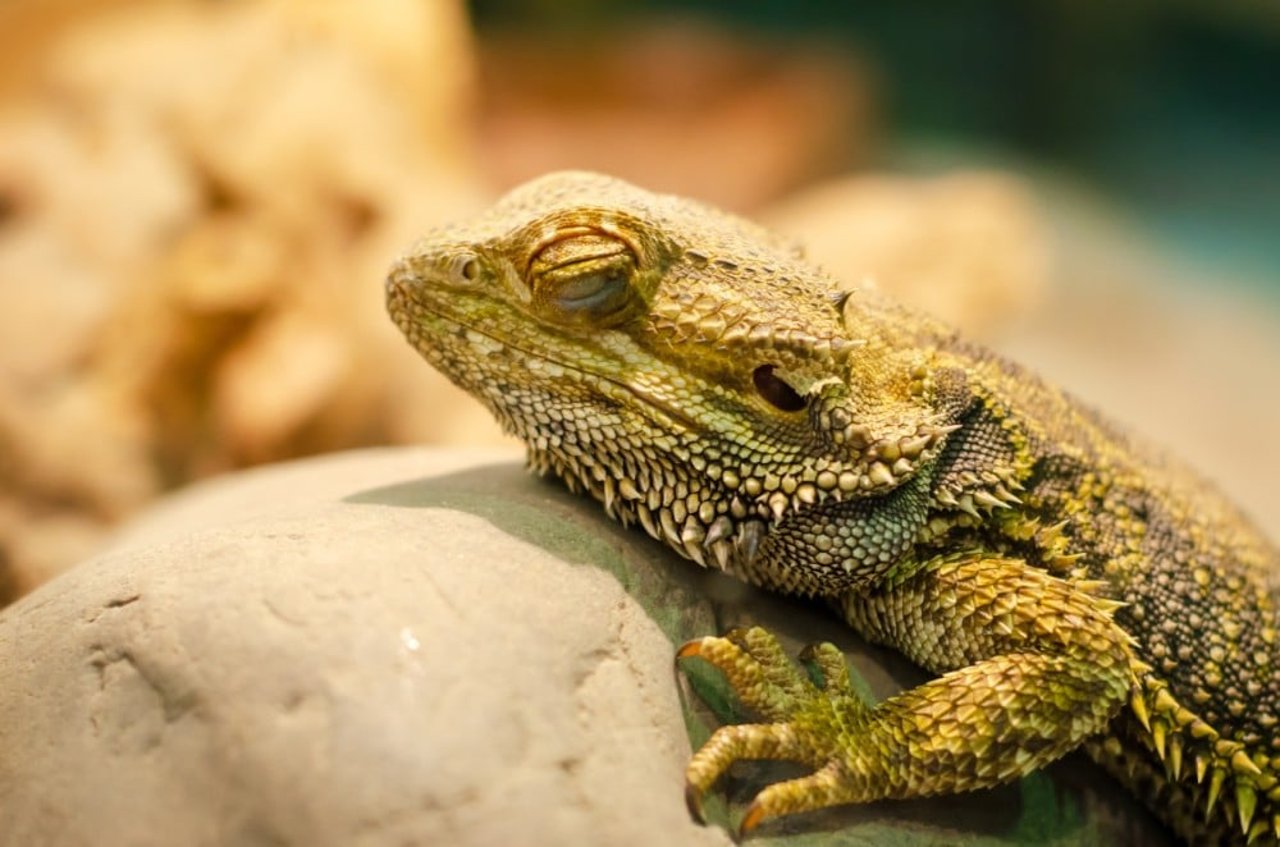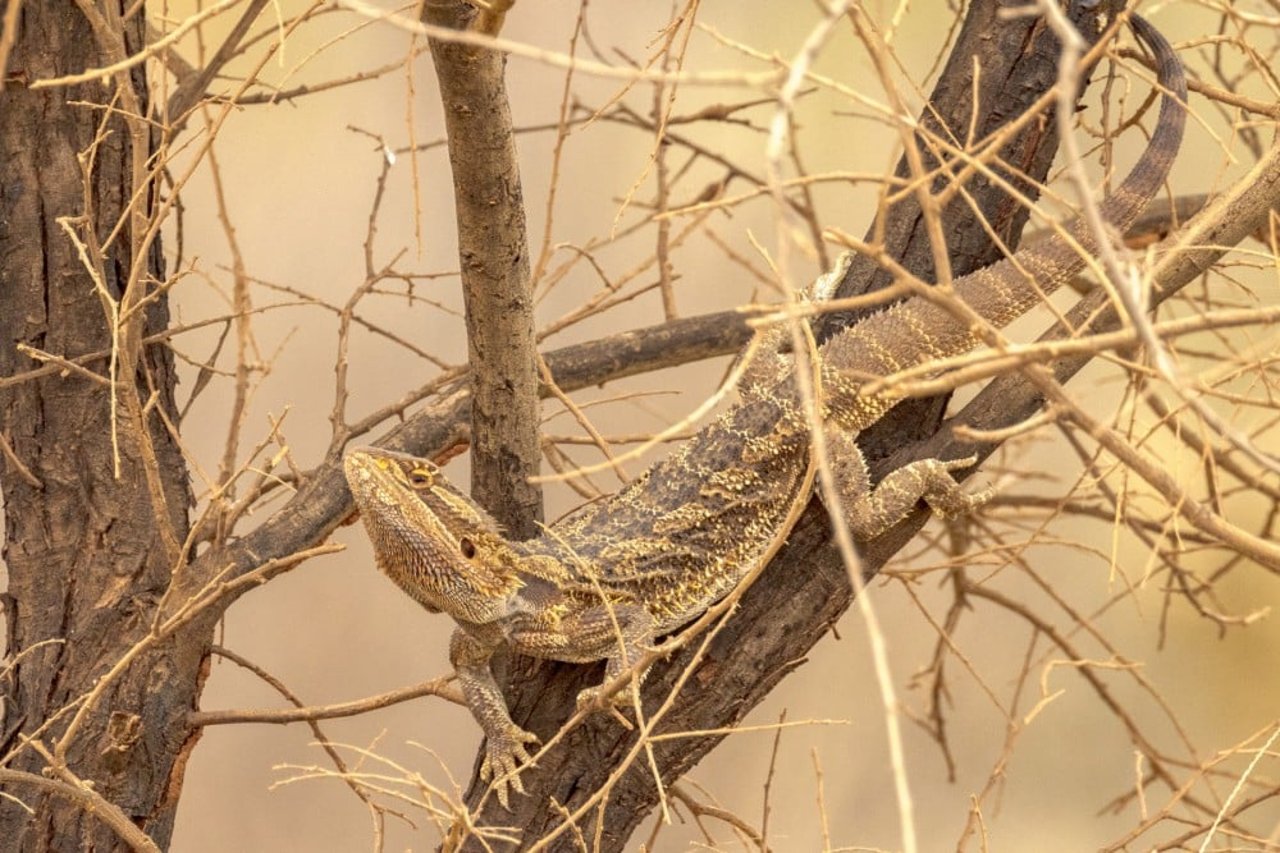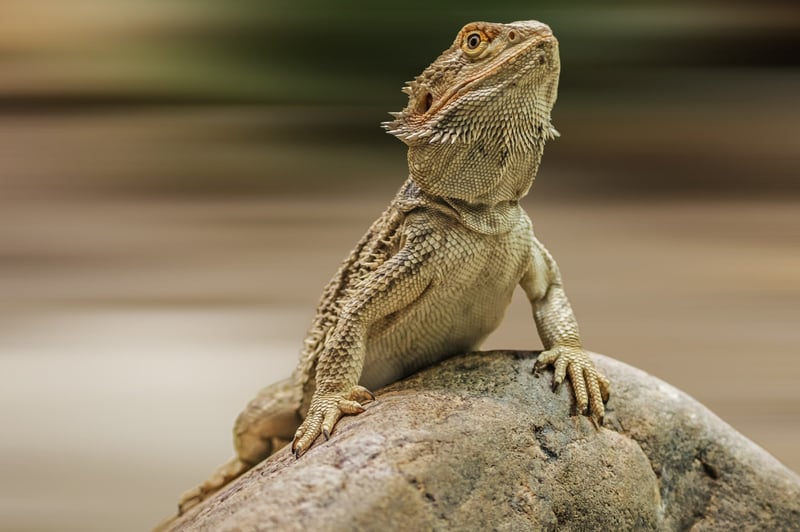
With their spiky “armor” and forked tongues, bearded dragons are undeniably cool animals. Check out five fascinating facts about these “mini dragons” and one way you can protect them.
1. Bearded Dragons Communicate Through Their Beards
While human beards might be fashion statements, bearded dragons use their beards to communicate. When threatened, bearded dragons puff out their beards to appear larger to predators. Their beard color changes too, switching from white to black while socializing. Bearded dragons also communicate through hissing and head bobbing with rapid bobs often meaning dominance while slow bobs accompanied by an arm wave signal submission.
2. Bearded Dragons Change Colors to Keep Cool
Chameleons might get all the fame for their impressive color-changing abilities, but bearded dragons deserve praise too. In addition to social communication, bearded dragons also change color to regulate their body temperature. When they need to heat up, they darken to increase solar absorption. When they need to cool down, their color lightens. Bearded dragons can also partition which part of their body changes. Color changes in their beard and chest are generally for social reasons, while changes in their backs are for temperature control.
3. Bearded Dragons Can Change Their Sex Based on Temperature
Scientists recently discovered that bearded dragons in the wild can change sex based on temperature. The ability to change sex according to temperature can be a major advantage for animals, allowing them to live in different environments. But it also means bearded dragons are even more susceptible to the climate crisis. A hotter planet could result in an all-female bearded dragon population, which would ultimately lead to their extinction.
4. What Do Bears and Bearded Dragons Have in Common? Hibernation
When the temperature cools, bearded dragons may enter a state similar to hibernation called “brumation.” During brumation, bearded dragons don’t eat and drink little water. After this period, bearded dragons emerge ready to reproduce, with male bearded dragons flaring their beards and bobbing their heads.
5. G’Day Mate!
Bearded dragons living in the wild are only found in Australia. They thrive in the country’s warm and dry deserts and scrublands where they can bask in the sun and burrow underground for safety. Unfortunately, bearded dragons are one of the most exploited reptiles in the wildlife trade. Millions are sold as companions, meaning countless bearded dragons now live in tanks and cages all over the world, thousands of miles from their true home.
Bearded dragons can’t thrive in human homes. In the wild, they explore their habitats, traveling across distances to forage for food and meet other bearded dragons. In a tank, their life is confined to a few square feet. Help make this the last generation of bearded dragons living in human homes. Tell PetSmart and Petco to stop selling bearded dragons.
